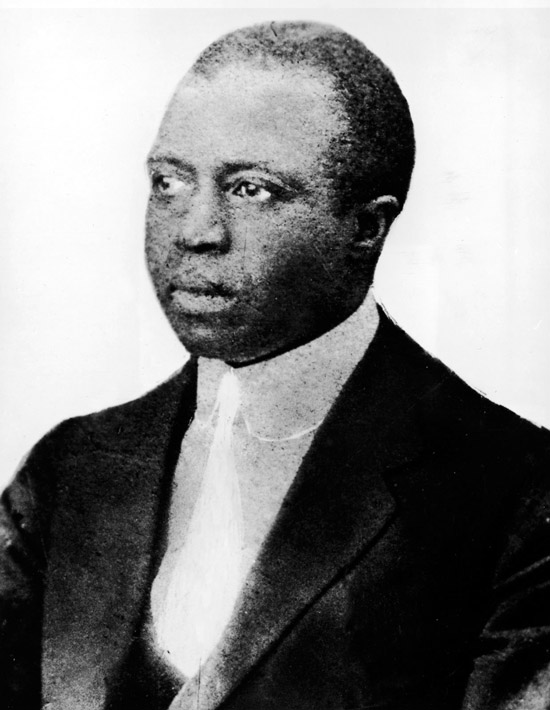

Ragtime developed among African-American musicians in the late nineteenth century as a combination of the march style of John Philip Sousa and rhythm of African music.
From marches, ragtime takes a tonic-dominant bassline (usually scored in the tuba) and upbeat triads (usually scored in the horn). When played on the piano, this pattern is called "ragging." The musical theory, harmony, and structure also derive from marches ("Pineapple Rag," you'll notice, is in march form.)
From African music, ragtime takes highly syncopated rhythmic patterns, which is generally worked into the melody and played in the right hand.
Ragtime was the first musical style pioneered primarily by black musicians to gain widespread popularity across the United States and eventually throughout the world. Starting with his 1899 song "The Maple Leaf Rag," Scott Joplin became the most recognizable icon of the genre, continuing to write popular songs for the next two decades such as "The Entertainer" (1902) and "The Pineapple Rag" (1908).
The genre was picked up by other black musicians like Jelly Roll Morton and eventually broke the color barrier as composers like George Gershwin and even Sousa himself began writing in the style.

The Maple Leaf Rag
The Pineapple Rag
The Entertainer